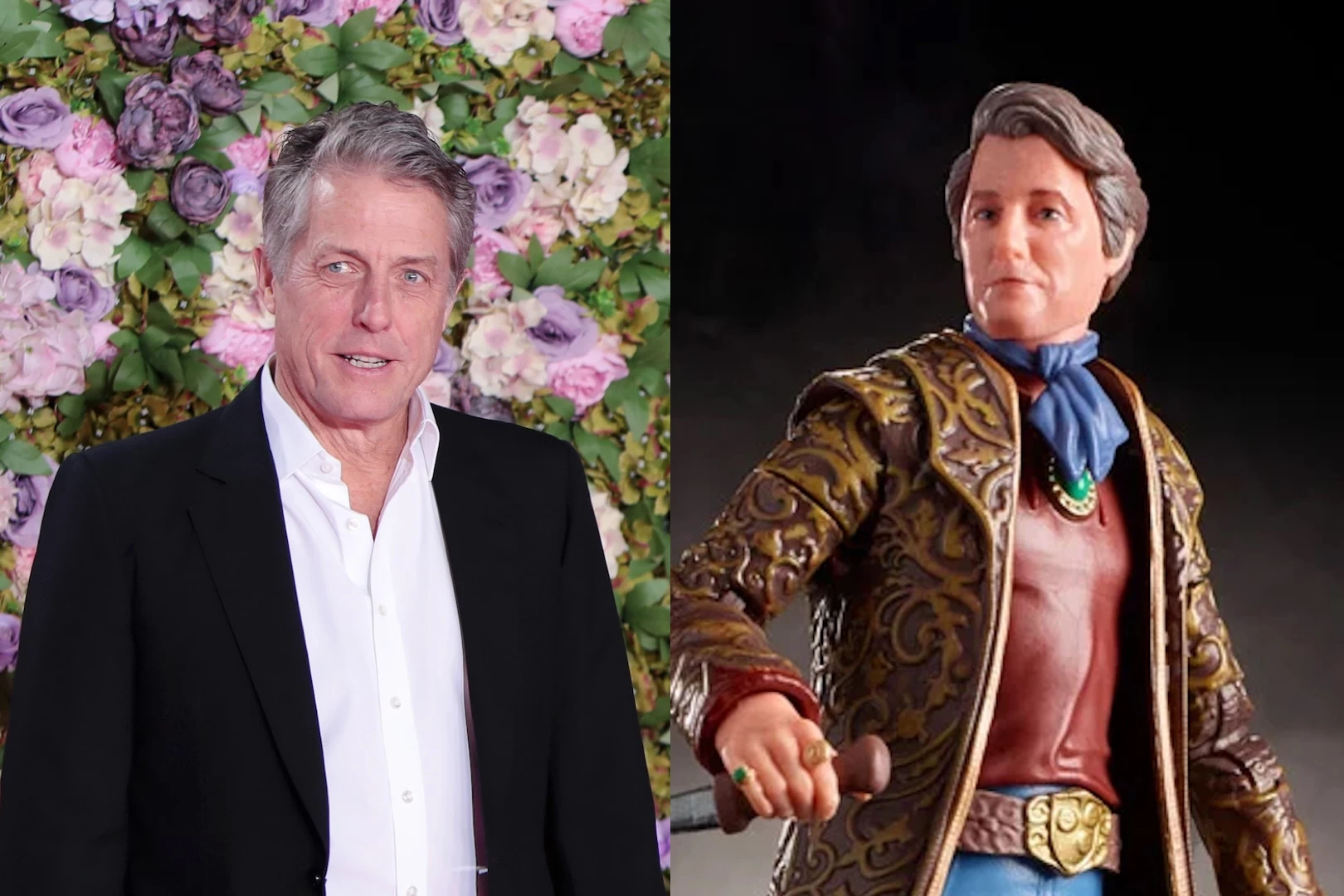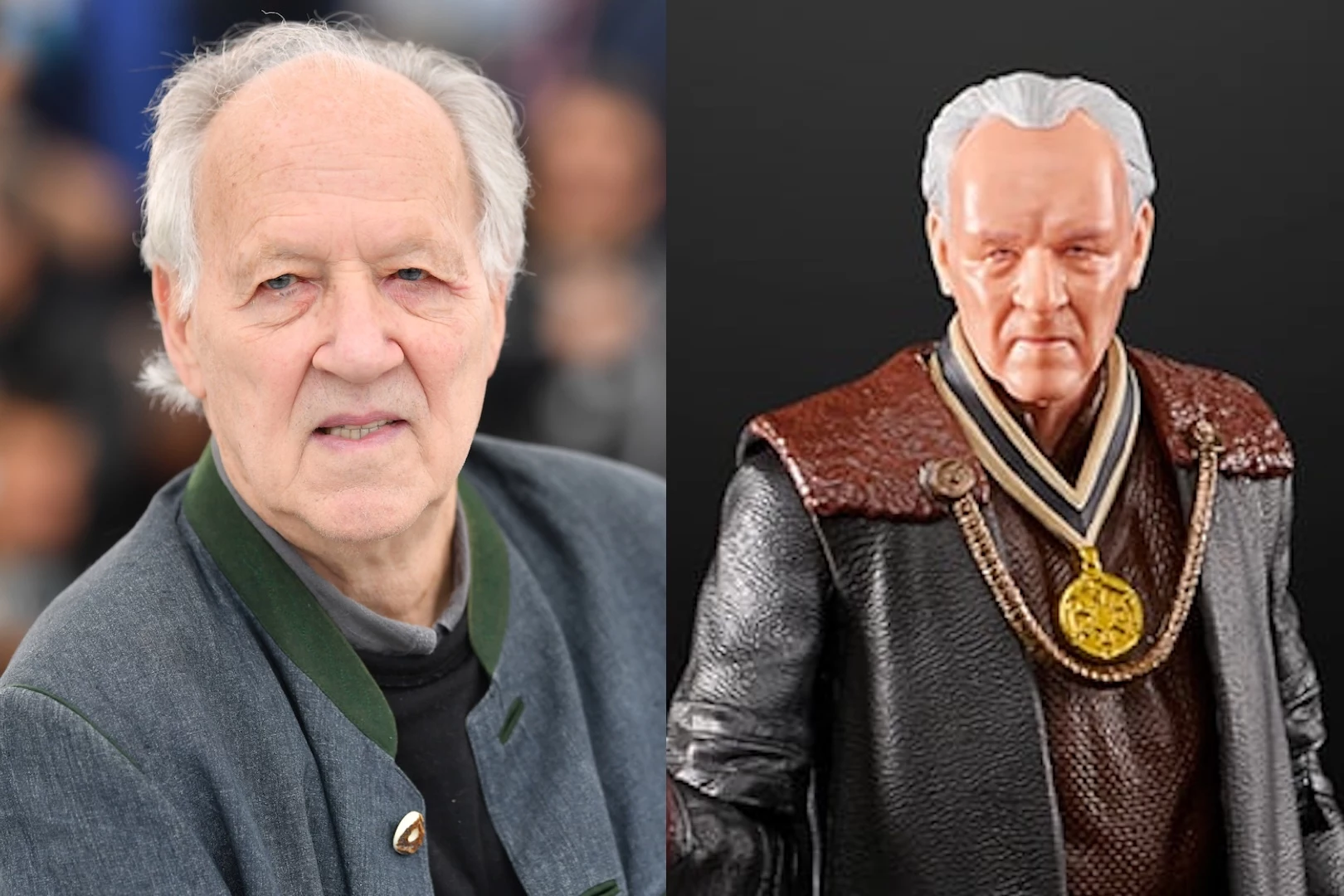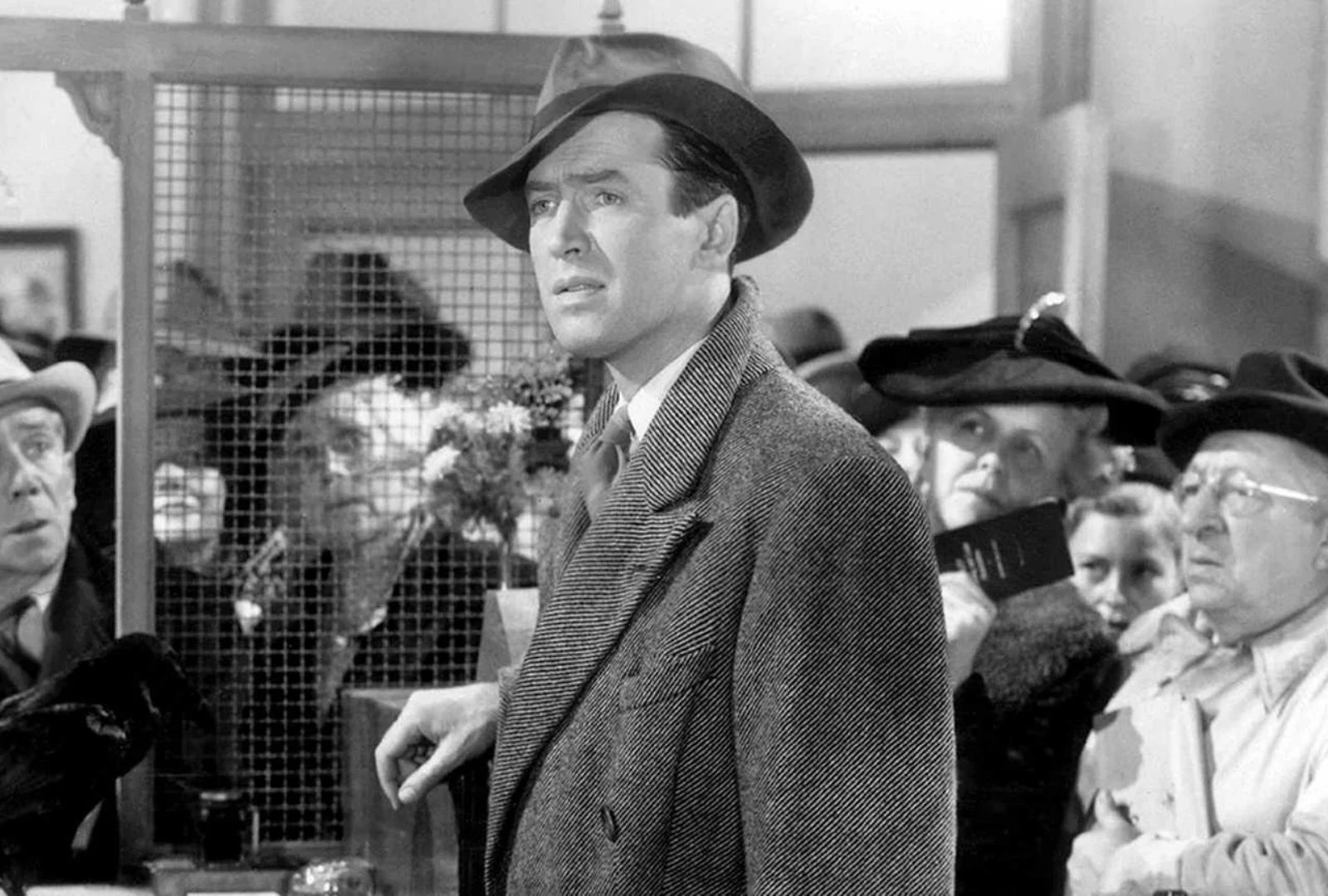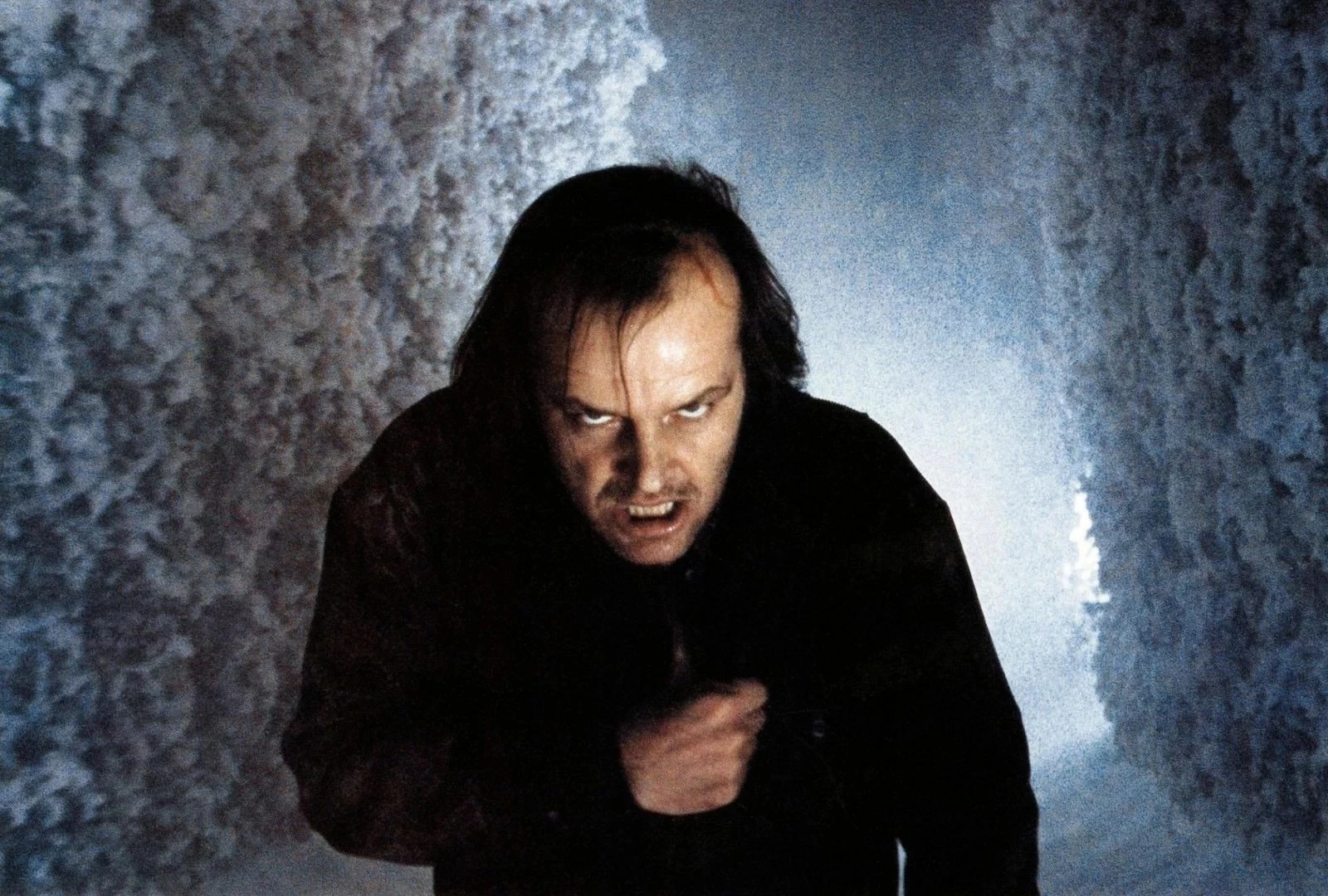
Actors who take on iconic roles like Marvel superheroes or Star Trek captains understand a few things upfront. They’re guaranteed a big paycheck, they’ll likely face online criticism constantly, and they’ll become forever known as an action figure.
These huge Hollywood movies are successful not just because of the films themselves, but because studios also make money from selling related products. They put characters and images from the movies on everything imaginable – clothes, games, toys, and even things like furniture and household items. Toys, in particular, are a huge part of this strategy and consistently popular with fans.
It always surprises me how many movies have inspired toy lines – it’s not just the big superhero franchises like Superman and The Avengers, but even really unexpected films like Coneheads and Little Nicky. And because of those quirky movies, some pretty unexpected actors have ended up with their own action figures!
We’re not talking about major stars like Robert Downey Jr. or Harrison Ford. These are actors you’d be completely surprised to see turned into action figures. I recently spent a lot of time online searching for the most unusual and unexpected actors who’ve actually gotten their own toys, and here’s what I found. It was much more enjoyable than a real rabbit hole, which, let me tell you, are quite filthy!
Just letting anyone who’s interested know that I’m selling a gently used threshing machine from the Children of the Corn set. If you’re serious about buying it, please contact me at cornchildren4life@gmail.com.
15 Most Random Actors Who Have Somehow Gotten Their Own Action Figures

Kenneth Branagh (Wild Wild West)
It’s amazing to me that Sir Kenneth Branagh has his own action figure! It came out with the toy line for the movie Wild Wild West, where he played the wonderfully over-the-top Dr. Loveless. The figure really nails his look from the film – that wild costume and makeup, and of course, his incredible steam-powered wheelchair (or sometimes, spider legs!). It might not be a perfect likeness, but it definitely captures the spirit of his performance.
Bradley Cooper (The A-Team)
Bradley Cooper has been part of the Marvel Cinematic Universe for a while now, providing the voice of Rocket Raccoon in the Guardians of the Galaxy films. However, the toys available reflect that he’s voicing a raccoon! If you’re looking for a figure that actually resembles Bradley Cooper himself, you’ll need to track down a toy from the 2010 A-Team movie. And while you’re at it, you can also find figures of Liam Neeson, Sharlto Copley, and Quinton “Rampage” Jackson. Hopefully, those figures have better hairlines than this one – it looks like someone deliberately tried to make it unflattering!

Jane Curtain (Coneheads)
Believe it or not, there’s a line of action figures based on the Coneheads movie – which came out a long time after the original Saturday Night Live sketches! Jane Curtin, a legend from SNL, even got two figures made of her character: one in her alien uniform and another in everyday clothes. Apparently, these toys were a huge hit in France, the Coneheads’ supposed home country.

Paul Giamatti (Planet of the Apes)
As a film and toy collector, I’ve always been fascinated by how some movies just beg to be turned into action figures. In the toy industry, they have a word for that – ‘toyetic’ – meaning the characters have designs that really lend themselves to toys. And it’s funny, even when a Planet of the Apes movie isn’t great, it’s still incredibly toyetic. Take Tim Burton’s 2001 reboot, for example. It wasn’t a critical darling, but they still made a whole line of toys! Not just the ape characters, but figures of Mark Wahlberg, Estella Warren, Helena Bonham Carter, and Tim Roth too. And get this – they even made an action figure of Paul Giamatti as the villainous slave trader orangutan, Limbo! Seriously, in 2001, kids could buy Paul Giamatti slave trader action figures. It’s a bizarre little piece of pop culture history.

Hugh Grant (Dungeons & Dragons: Honor Among Thieves)
Growing up, I always wished there had been an action figure of Hugh Grant like the one from the movie Nine Months. It took until 2023 for that to finally happen, with a figure based on his role in Dungeons & Dragons: Honor Among Thieves. While the figure looks pretty accurate, Grant himself wasn’t a fan. He jokingly complained on The Late Late Show that it made him appear to be wearing a “big blue diaper” and even suggested they burn it! That’s a harsh critique.

Werner Herzog (The Mandalorian)
I have to admit, I totally splurged on this a couple of years ago! When I saw a Werner Herzog action figure – based on his guest spot in The Mandalorian – I just couldn’t resist. It’s hilarious having him on my shelf, looking down on all my Spider-Man collectibles. I always imagine him saying something like, “Spider-Man, you know nothing of the deep ocean of chaos beneath the surface of the civilized world. There is no power, there is no responsibility, only the agony of life, screaming in pain, echoing through eternity.”

Wayne Knight (Jurassic Park)
Steven Spielberg’s Jurassic Park started a long-running movie series and also sparked a hugely popular line of dinosaur toys that are still being made today. While the toys look very realistic now, the first ones released in 1993 weren’t quite as accurate. For example, the action figure of Wayne Knight (best known as Newman!) depicted a stern-looking man in a green turtleneck, sunglasses, and a gun holster. This is a funny image, because in Jurassic Park, Dennis Nedry only wore that outfit while desperately trying to survive after betraying the park and shooting at raptors – it was a thrilling scene!

Barry Pepper (Battlefield Earth)
That’s right, Battlefield Earth even had action figures made of its characters! It makes sense – kids love the memorable characters like the villainous Psycho aliens, Terl and Ker. And of course, you need a hero to fight them, so they created a figure of Barry Pepper’s character, Johnny Goodboy Tyler, complete with long, flowing plastic hair, to save the day.

Jean Reno (Godzilla)
Let’s be honest, the 1998 Godzilla didn’t exactly boast a huge roster of household names – though I do count the big lizard himself as a star! That meant the toy line ended up immortalizing some pretty unexpected faces in plastic, like Matthew Broderick, Hank Azaria, and even Jean Reno, of Léon: The Professional fame. Seriously, if you were handed that Reno figure now, would you even recognize it? I think it’s a surprisingly accurate depiction of his look during that Godzilla era.

Denise Richards (Starship Troopers)
I don’t like to criticize other parents, but if my kids asked to watch Starship Troopers – a very violent and mature movie – I’d immediately say no. It’s just not suitable for children.
However, the Galoob company actually made Starship Troopers toys! This includes a figure of Denise Richards’ character, Carmen Ibanez. And yes, there’s also a Jake Busey action figure. You’re welcome.

Adam Sandler (Little Nicky)
Adam Sandler is a major movie star known for creating much of his own content. Unlike many actors who appear in lots of superhero or action films – the usual source of action figures – Sandler rarely participates in those genres. However, McFarlane Toys was so keen to work with Sandler in the early 2000s that they made several toys based on his poorly received film, Little Nicky. The line included figures of Kevin Nealon, Robert Smigel, and two different versions of Sandler himself. The standout figure is arguably this “action” figure of Nicky simply lying on a radiator – perfect for imaginative naptime play!

Talia Shire (Rocky)
Jakks Pacific created a surprisingly large collection of toys based on the Rocky movies. The line features characters from all six films, including some unusual choices like announcer Brent Musburger, boxer Mike Tyson, and even a toy representing a side of beef called “The Meat.” Of course, Talia Shire’s character Adrian was included – no Rocky collection would be complete without her. However, her action figure has a strangely fierce expression. Adrian is typically a very gentle and quiet character, especially in the first movie, but the figure makes her look ready to fight Apollo Creed herself!

Paul Sorvino (Dick Tracy)
The Dick Tracy movie had an incredible number of action figures based on its supporting actors. Beyond the figures of Dick Tracy himself (Warren Beatty) and Big Boy (Al Pacino), they created figures for many of the villains, including Flattop (William Forsythe), Pruneface (R.G. Armstrong), Sam Catchem (Seymour Cassel), Mumbles (Dustin Hoffman), and Lips Manlis (Paul Sorvino). As a nod to the character’s fate in the movie, the Lips Manlis figure even came with a pair of cement shoes!

Christopher Walken (Batman Returns)
As a film fan, I’m always surprised by the action figures they make these days. We get figures for every superhero movie, which is expected. But honestly, Christopher Walken getting an action figure? Even as the delightfully villainous Max Shreck from Batman Returns? It’s fantastic, but unexpected! It really makes you dream – if only someone would create a figure of his character from The Country Bears, my collection would be complete!

Marlon Wayans (G.I. Joe: The Rise of Cobra)
The G.I. Joe films started with toys, so it’s not surprising they then created new toys based on the movies themselves. Several actors from the films got their own G.I. Joe action figures, including Channing Tatum, Bruce Willis, Rachel Nichols, Sienna Miller, Joseph Gordon-Levitt, Christopher Eccleston, and Marlon Wayans, who played the character Ripcord. Wayans’ figure is a pretty good likeness, but Bruce Willis’ is particularly striking – it remarkably resembles his later-era John McClane from the Die Hard movies, which is quite funny.
Classic Movies That Got Bad Reviews From Critics

It’s a Wonderful Life (1946)
Despite now being considered the most cherished Christmas movie of all time, It’s a Wonderful Life initially struggled. It wasn’t a success when it was released in theaters and didn’t receive positive reviews from critics at the time. For example, a review in The New York Times criticized director Frank Capra’s depiction of American values, finding the characters and story unrealistic and overly dramatic. A rather grumpy assessment, indeed!

The Night of the Hunter (1955)
Charles Laughton was a highly respected actor with a successful career in theater and film. He only directed one movie, The Night of the Hunter, a now-famous noir thriller about a killer trying to steal a woman’s inheritance. Although the film is now a favorite among film buffs and historians, it wasn’t successful when it was first released, and Laughton never directed another film.

Vertigo (1958)
As a film critic, I can confidently say no discussion of Alfred Hitchcock is complete without Vertigo. It’s his most unsettling and deeply psychological exploration of obsession and loss. In fact, many now consider it not just Hitchcock’s finest work, but a cinematic masterpiece on par with the greatest films ever made. It even made history in 2012, becoming the first film to knock Citizen Kane off the top spot in the prestigious Sight and Sound poll after over half a century! That’s quite a turnaround, considering the film initially baffled audiences and critics back in 1958. One headline from The Los Angeles Times perfectly captured the initial reaction: “Vertigo Induces Same in Watcher.” It’s a testament to the film’s enduring power that it’s now so highly regarded after a somewhat lukewarm start.

Peeping Tom (1960)
Similar to the initial reaction to Vertigo, critics were shocked by the unsettling mix of sex and violence in Michael Powell’s 1960 thriller, Peeping Tom. One critic famously hated it so much they suggested destroying the film by throwing it away and flushing it down the drain. The movie was so poorly received in the U.K. that it effectively ended Powell’s directing career. However, Peeping Tom is now recognized as a classic, included in the Criterion Collection, and considered a groundbreaking and influential film exploring the disturbing nature of watching others.

Bonnie and Clyde (1967)
Few movies have sparked as much controversy with initial reviews as Bonnie and Clyde. While many older critics strongly disliked its graphic violence, the film quickly became popular with younger audiences. It also won over a new wave of critics, including Pauline Kael and Roger Ebert, who disagreed with the mainstream and praised the movie. Notably, the film inspired a famous reversal of opinion: Joe Morgenstern of Newsweek originally called it a mindless action film, but after a second viewing, completely changed his mind and declared it a modern classic.

Night of the Living Dead (1968)
Though it might seem mild by today’s standards, Night of the Living Dead was shockingly violent for its time, and its use of zombies as a metaphor for the racial tensions and anxieties of 1960s America was groundbreaking. The film was a quick financial success, earning back its small budget many times over, but its importance wasn’t fully recognized by critics until after director George A. Romero and others created even more shocking zombie films, and its lasting influence on the horror genre became clear.

2001: A Space Odyssey (1968)
Stanley Kubrick faced more initial criticism than almost any other acclaimed director. Critics often felt his new films didn’t measure up to his past successes, but later came to recognize his brilliance. Several of his movies followed this pattern – look out for two more on this list if you’re curious which ones.
This even happened with what is now considered his masterpiece, 2001: A Space Odyssey. While some, like Roger Ebert, immediately praised the film’s ambitious and thought-provoking nature, others were unconvinced. Critics Andrew Sarris and Pauline Kael, who frequently disagreed, surprisingly both disliked 2001. Sarris called it a “disaster” and Kael deemed it “monumentally unimaginative.” (It’s understandable if someone doesn’t enjoy 2001 – it’s still a divisive film. But to call it unimaginative seems like a strange criticism.)

The Wild Bunch (1969)
Sam Peckinpah was known for challenging the limits of what was acceptable in Hollywood films, and this often caused controversy. Today, his 1969 Western, The Wild Bunch, is widely considered a classic – a groundbreaking reimagining of the traditional frontier story. However, when it was first released, the film’s intense violence and questioning of American myths sparked significant criticism. In fact, at a press conference the day after the premiere, a reporter famously asked Peckinpah to justify the film’s very existence.

The Rocky Horror Picture Show (1975)
Today, The Rocky Horror Picture Show is a classic cult film, but it wasn’t an instant hit. Initially, critics and audiences didn’t respond well to it. However, the distributor, noticing the success of similarly unconventional films like Pink Flamingos with late-night showings, convinced a few theaters to screen it at midnight. This proved to be a stroke of genius. The film quickly gained a following at the Waverly Theater in New York City, and soon midnight screenings were selling out nationwide, cementing its place in film history.

The Warriors (1979)
It’s not surprising some critics were confused by The Warriors. Its strange and unique portrayal of New York City, filled with fighting gangs, makes it a film likely to gain a dedicated, cult following. And that’s exactly what happened – despite some negative reviews, Walter Hill’s movie has become a beloved classic from the 1970s.

The Shining (1980)
When Stanley Kubrick’s film version of The Shining came out, it wasn’t well-received by critics – and surprisingly, the book’s author, Stephen King, publicly criticized it too. King disliked the casting choices and was unhappy with the changes Kubrick made to his story. In fact, The Shining even received several Razzie nominations, including one for Worst Director – it’s amazing to think Stephen King might have actually voted for the Razzies!

Caddyshack (1981)
Comedies often don’t receive much praise from critics, and many now-classic films were initially panned. A prime example is Caddyshack, a hugely popular 80s comedy that critics at the time largely disliked. Many reviews saw it as a disappointing sequel to Animal House, even though it was co-written by the same person, Harold Ramis. In fact, The New York Times bluntly called it a spin-off of Animal House and even less funny than Cheech and Chong’s Next Movie.

Blade Runner (1982)
It’s surprising, given its current status as a sci-fi classic, that Blade Runner initially received negative reviews. However, the first version released wasn’t director Ridley Scott’s vision. It included awkward narration by Harrison Ford and a cheerful ending he didn’t want—footage originally intended for Stanley Kubrick’s The Shining was used to create it. The film’s reputation truly grew only after fans discovered Scott’s preferred cuts in the late 1980s and early 1990s.

The Thing
It’s surprising that Blade Runner received mixed reviews, but even more shocking that The Thing did. Today, John Carpenter’s The Thing is widely considered one of the greatest horror films ever made – a suspenseful thriller about an alien that threatens a research station in Antarctica. However, in 1982, Vincent Canby of The New York Times strongly disliked it, dismissing it as “a foolish, depressing, overproduced movie.” He even doubted there was any deeper meaning to it. The only logical explanation for such a negative reaction, some believe, is that all the film critics were secretly aliens trying to conceal their takeover of Earth – starting with the critics, of course. (It’s a bit of a far-fetched idea, admittedly.)

Top Gun (1987)
Released in 1986 and starring a then-rising Tom Cruise, Top Gun became a huge box office hit, though it wasn’t initially praised by critics. While it’s now considered an iconic ’80s film and frequently shown on television, it still has a surprisingly low rating on Rotten Tomatoes. At the time, reviewers found it superficial, but today it’s recognized as a fun and defining movie that perfectly captures the spirit of the Reagan years.

Predator (1987)
While Arnold Schwarzenegger is famous for The Terminator, many of his other 1980s action movies weren’t initially well-received by critics. For example, Predator, now considered one of his best from that decade, received a negative review from Gene Siskel and was called “grisly and dull” with few surprises by Janet Maslin of The New York Times. It’s likely Maslin would be surprised to learn the film became a huge success, leading to sequels, spin-offs, comics, and even iconic moments like the famous handshake between Schwarzenegger and Carl Weathers.

Spaceballs (1987)
Mel Brooks’ Spaceballs is full of silly, over-the-top moments – from Dark Helmet’s frustrated outbursts to President Skroob’s antics, and even characters casually called “Aholes.” Despite all this, it somehow earned a PG rating, which is why my parents let me watch it as a kid, and it quickly became my favorite movie. While Star Wars is a classic, Spaceballs took it to another level with its humor. Critics back then didn’t love it, but I, and many kids like me, did. And no amount of criticism will ever change my mind – Spaceballs is a great movie.

Home Alone (1990)
When Home Alone came out, critics didn’t like its over-the-top physical comedy. In fact, most of them panned it! But audiences disagreed – it became the highest-grossing movie of 1990 and, over time, a beloved Christmas tradition. It’s like a modern It’s a Wonderful Life, but with a lot more slapstick injuries. It’s hard to understand how anyone could write a negative review!

Twin Peaks: Fire Walk With Me (1992)
Despite its initially poor reception, David Lynch’s Twin Peaks prequel, Fire Walk With Me, is now viewed much more favorably. When it was first released in 1992, the film was largely rejected – it was even booed at the Cannes Film Festival and performed poorly in theaters. Critics at the time felt it strayed too far from the original Twin Peaks series after its successful first season. However, over time, dedicated fans have championed the film, arguing that its dark and unsettling portrayal of Laura Palmer’s final days is crucial to understanding the entire Twin Peaks story and Lynch’s work as a whole. Back then, many simply found it too strange and disturbing.

Dumb and Dumber (1994)
Comedies often don’t get much respect from critics, but silly comedies are usually the most overlooked. The movie Dumb and Dumber faced an uphill battle with critics from the start, even if it was surprisingly clever for a goofy film. Now, it’s remembered much more fondly than it was initially received.

Tommy Boy (1995)
In the 1990s, TV critics weren’t always impressed with Saturday Night Live, and movie critics were even harsher on the show’s cast when they started appearing in films. While some SNLrelated movies and comedies weren’t very good, others were genuinely hilarious. Tommy Boy*, starring Chris Farley as the clumsy heir to a brake-pad company, was a perfect example – he teams up with a sarcastic coworker (David Spade) on a make-or-break sales trip. It’s baffling that critics didn’t appreciate it, especially considering the iconic line, “Tommy want wingy!”

The Big Lebowski (1998)
When The Big Lebowski came out in 1998, many critics were confused. It followed Fargo, which had been the Coen brothers’ biggest critical success, earning numerous awards and Oscar nominations. Some reviewers couldn’t understand why the Coens would make a quirky, rambling comedy about a laid-back detective after such a highly praised and serious film. However, over time, and when viewed separately from Fargo’s success, The Big Lebowski began to be appreciated for its unique and unconventional style.

Eyes Wide Shut (1999)
Even after his death, Stanley Kubrick didn’t receive universal praise from critics. His final film, Eyes Wide Shut, released shortly after he passed away, received mixed reviews. Many critics felt it wasn’t as strong as his earlier masterpieces like 2001, A Clockwork Orange, and Full Metal Jacket. The film’s famous orgy scene attracted a lot of attention, with some viewers finding it overly explicit and others considering it underwhelming. While it had some supporters in 1999, Eyes Wide Shut has gained much more positive recognition through later critical assessments.

Wet Hot American Summer (2001)
Okay, so everyone was confused by Wet Hot American Summer at first – actors way too old to play teenagers, completely random jokes, and… a talking can of vegetables?! Critics didn’t get it, but honestly, who cares what they thought? The rest of us absolutely loved it! It’s seriously one of the funniest and most bizarre comedies from the 2000s, and I’m a huge fan.

Jackass: The Movie (2002)
It’s understandable that Jackass isn’t for everyone, particularly professional movie critics. The original film’s score on Rotten Tomatoes—49%—shows a pretty even split between positive and negative reviews. Surprisingly, the first Jackass movie—which many consider the funniest in the series—actually has the lowest Rotten Tomatoes score of all the films. The newest one, Jackass Forever, scored an 86, nearly double the original! Perhaps critics became more accepting of crude humor over time, especially younger ones who grew up with the TV show and movies.
Read More
- Mobile Legends: Bang Bang (MLBB) Sora Guide: Best Build, Emblem and Gameplay Tips
- Clash Royale Best Boss Bandit Champion decks
- Best Hero Card Decks in Clash Royale
- All Brawl Stars Brawliday Rewards For 2025
- Best Arena 9 Decks in Clast Royale
- Brawl Stars December 2025 Brawl Talk: Two New Brawlers, Buffie, Vault, New Skins, Game Modes, and more
- Vampire’s Fall 2 redeem codes and how to use them (June 2025)
- Clash Royale Witch Evolution best decks guide
- Clash Royale Furnace Evolution best decks guide
- ATHENA: Blood Twins Hero Tier List
2025-10-21 22:34